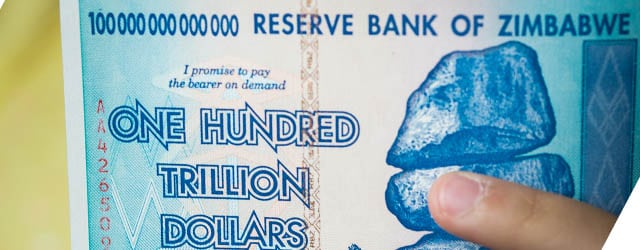The demonetization of the Zimbabwean dollar began in June and holders of the near worthless currency have until September 30 to exchange it for US dollars.

But anyone expecting a windfall will be bitterly disappointed. Today, 35 quadrillion (35,000,000,000,000,000) Zimbabwean dollars are equal to just US$1.
Hyperinflation in Zimbabwe began in the late 1990s and peaked in 2008 at 230%.
A multicurrency system has been in operation ever since Zimbabwe stopped printing money in 2009, with the South African rand and US dollar in use since 2008 and the Chinese renminbi, Australian dollar, Japanese yen and Indian rupee joining the list of accepted currencies in 2014.
Because the local currency has effectively been out of circulation since 2009, canning it, says Russell Lamberti, chief strategist at ETM Analytics in Johannesburg, retiring it will have absolutely no effect on the average Zimbabwean.
Dollarization lowers inflation and interest rates and, if the country were healthy in other respects, could spur investment by providing a more stable financial environment and reduced transaction costs. But Zimbabwe’s failure to tackle core problems—lack of infrastructure, massive internal and external debts caused by rampant spending, political instability and endemic corruption—has spooked investors, and dollarization won’t solve these problems.
Lamberti is pessimistic about Zimbabwe’s willingness to tackle reform: “The Mugabe regime lost control over the money supply in 2009, so it cannot use the printing press to finance reckless fiscal spending and steal wealth from Zimbabweans. (But) as a result, it has resorted to looting what’s left of the economy more overtly. Still, using dollars is preferable to using a worthless currency.”
“Zimbabwe’s is a dictatorship that seems to be immune to…the de facto monetary regime,” Lamberti said. Reform will likely be determined by “Mugabe’s health and local [politics] and geopolitics.”



